PREVIOUS
Freedom Fighters from Tamil Nadu Part - 02
July 19 , 2024
176 days
7383
0
(இதன் தமிழ் வடிவத்திற்கு இங்கே சொடுக்கவும்)
7. Shyamala Rajagopalan
Early Life
- Shyamala Rajagopalan was born in Kamayut town near Yangon in Burma.
- She studied at the British Government High School in Kamayut.
Early Activism
- Shyamala frequently bunked classes to participate in the Seva Dal Movement, the grassroots front organization of the Indian National Congress.
- She was deeply moved by Subash Chandra Bose's passionate speech at a nearby bazaar, especially his slogan "Give me blood, I will give you freedom."
Joining the INA
- Despite her father's strong opposition, Shyamala was determined to join the Indian National Army (INA).
- At the age of 16, she became the youngest spy for Bose’s all-woman Rani of Jhansi Regiment, led by Captain Lakshmi Sahgal.
Role as a Spy
- Shyamala was stationed at a military hospital in Mingaladon as a staff nurse, gathering intelligence against British agents for the Japanese, who supported Bose.
- She once discovered information about a bombing and warned the Japanese army.
- During the final bombardment in the Burma Campaign in 1945, when the Allied forces defeated the Japanese, Shyamala heroically rescued several people from a trench, climbing up a ladder to get them to safety.
Legacy
- Shyamala Rajagopalan’s bravery and dedication to the cause of Indian independence highlight her significant contributions as one of the youngest and most daring spies in Bose’s INA.
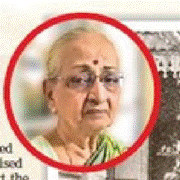
Early Life
- K. Alagiri Devar was born in 1914 at Kalugumalai village, Kovilpatti.
Political Involvement
- From 1934 to 1935, Alagiri Devar served as a volunteer of the village Congress Committee.
- Between 1936 and 1940, he was a member of the Congress Committee, actively participating in the Indian independence movement.
- In 1940, Alagiri Devar was involved in the Tirunelveli Commonality Sati Act and was subsequently imprisoned for one year in Kokkirakulam Jail for his activism.
Social Contributions
- Bharti Colony
- Alagiri Devar attempted to build a settlement called "Bharti Colony" for the common people, demonstrating his commitment to social welfare and public charity.
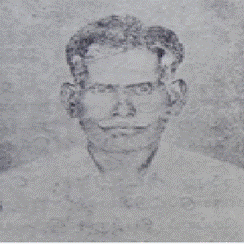
Early Life
- G. Ramanuja Naicker was born in 1914 at Kalugumalai, Kovilpatti.
Participation in the Independence Movement
- Individual Satyagraha
- In 1941, G. Ramanuja Naicker took part in the Individual Satyagraha, a non-violent resistance movement initiated by Mahatma Gandhi.
- For his participation, he was imprisoned for four months in Alipuram jail at Bellary.
Post-Independence Activities
- Joining the Sarvodaya Sangam
- After India gained independence, G. Ramanuja Naicker joined the Sarvodaya Sangam in Virudhunagar.
- The Sarvodaya Sangam is an organization dedicated to the promotion of Gandhian principles, focusing on social reform and rural development.
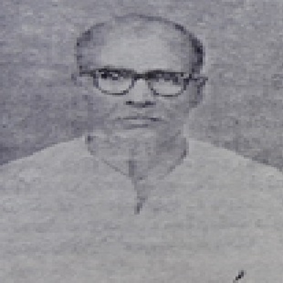
Early Life
- K. Deena Dayalan lala was born in Kalugumalai, Kovilpatti.
Participation in the Independence Movement
- Nagpur Flag Satyagraha
- K. Deena Dayalan lala was a true patriot and a follower of Mahatma Gandhi.
- In 1923, he took part in the Nagpur Flag Satyagraha, a significant event in the Indian independence movement aimed at asserting the right to hoist the Indian national flag.
- For his participation, he was imprisoned for one year in Nagpur jail.
- Kalugumalai Murugan Temple Entry Movement
- On May 20, 1947, K. Deena Dayalan lala, along with S.N. Somayajulu, took part in the Kalugumalai Murugan Temple Entry movement, which was aimed at allowing all castes entry into the temple, breaking social barriers and promoting equality.
Death
- K. Deena Dayalan lala passed away on December 5, 1965.
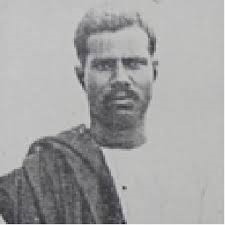
11. V. Poosai Pillai
Early Life
- V. Poosai Pillai was born in 1903 to Vaithiyanathan Pillai in Kalugumalai, Kovilpatti.
Participation in the Independence Movement
- V. Poosai Pillai took part in the Toddy Shop Agitation.
- He participated in the Khadar movement.
- He was actively involved in the Abolition of Untouchability movement.
- V. Poosai Pillai took part in the Kalugumalai Murugan Temple Entry movement on May 20, 1947.
- He participated in the Bhoomi dana movement.
- He used pamphlets and handbills for propaganda.
Death
- V. Poosai Pillai passed away on May 24, 1955.
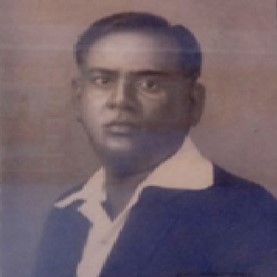
Early Life
- K. T. Kosalram was born at Arumuganeri, Thoothukudi in 1915.
Participation in the Independence Movement
- In 1932, K. T. Kosalram took part in the Civil Disobedience Movement.
- He participated in the August Movement in 1942.
- In 1942, he was involved in the Kurumbur Railway Station burning case, for which he was sentenced and imprisoned.
- Kosalram served as the secretary of the Tirunelveli District Satyagraha Committee.
Post-Independence Activities
- Member of Parliament
- After Independence, K. T. Kosalram was elected as a Member of Parliament from the Tiruchendur Constituency in the 1977, 1980, and 1984 elections.
- Newspaper
- He owned Dina Saidhi, a newspaper based in Purasawakkam, Chennai.
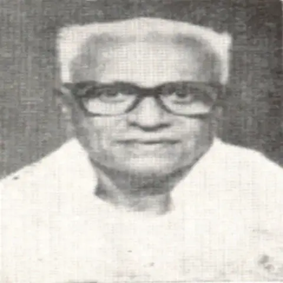
13. M.C. Veerabahu Pillai
Early Life
- M.C. Veerabahu Pillai was born on 19 May 1903 to M. Chidambaram Pillai and Goi Ammal in Thoothukudi.
Legal Career and Political Involvement
- Veerabahu Pillai was an advocate who left his profession to work for Indian independence.
- In 1934, he served as the district Congress president.
- He used Arunodhyam Press to print pamphlets and handbills for propaganda.
- Veerabahu Pillai was a member of the Constituent Assembly and signed the original Constitution of India in his mother tongue, Tamil.
- He underwent imprisonment for the cause of freedom.
- When Mahatma Gandhi visited Srivaikundam and Thoothukudi in January 1934, Gandhi stayed at Veerabahu's house.
Legacy
- M.C. Veerabahu Pillai passed away on 15 April 1976.
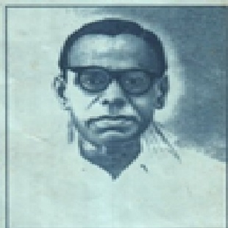
Early Life
- Thooku Medai Kasirajan was born in Arumuganeri, Thoothukudi (Tuticorin), Tamil Nadu.
Role in the Indian Independence Movement
- Kulasai Case
- The Kulasai case is significant in the history of India's struggle for independence as it involved the use of firearms against the British.
- Following the murder of former Tirunelveli Collector Ashe by Vanji Nathan, Loane was the second English officer to be murdered by radical leaders of the Congress during the intensified Quit India Movement in Thoothukudi.
- Armed Struggle During Quit India Movement
- After Mahatma Gandhi's "Do or Die" call during the Quit India Movement, radical leaders in Thoothukudi decided to use arms against the British.
- The armed struggle began in September 1942, with several secret meetings held by leaders who aimed to rout police stations for weapons.
- Failing that, they targeted guards at salt pans.
- Attack and Killing of Officer Loane
- During one such attempt in Arumuganeri near Tiruchendur, the leaders tied the guards to steal their guns.
- Officer Loane, who was in charge, tried to shoot but was attacked and killed.
Imprisonment and Release
- Accusation and Capital Punishment
- A total of 26 freedom fighters were accused in the case, with important figures being Thooku Medai Kasirajan and Thooku Medai Rajagopal.
- Both were awarded capital punishment.
- Intervention by Rajaji
- After former Chief Minister Rajagopalachari (Rajaji) argued at the Privy Council in London, the death sentence was withdrawn, and Thooku Medai Kasirajan and Rajagopal were released.
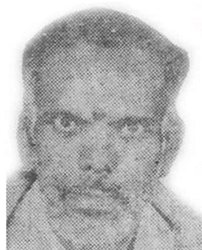
15. Thooku Medai Rajagopalan Nadar
Early Life
- Rajagopal was born in Arumuganeri, Thoothukudi (Tuticorin).
Role in the Indian Independence Movement
- Armed Struggle and the Incident at Uppalam
- Rajagopal led a group of freedom fighters who entered a site, set fire to a shed, and attempted to escape by tying up the guards and snatching their weapons.
- An English officer named W. Loane Durai, awakened by the noise, confronted the freedom fighters.
- Without ammunition, he attacked them with the bayonet of his gun.
- The freedom fighters, led by Rajagopal, killed Loane Durai by stabbing and slashing him with their weapons.
- This incident is mentioned in the Thoothukudi District Gazetteer.
- Trial and Death Sentence
- The murder trial was completed in February 1943, and the verdict was delivered, sentencing Rajagopal to death.
- The execution was scheduled for April 30, 1943.
- Although an appeal was filed in the Madras High Court, the death sentence was upheld.
- A federal court, similar to the Supreme Court, also upheld the conviction.
- Intervention and Commutation of Sentence
- Congress leaders and lawyers R. Venkatraman and S. Krishnamurthy appeared before the Privy Council in London to plead on his behalf.
- Rajaji was also prepared to go to London if necessary.
- The British government, not wanting Rajaji to come to London, advised the Governor General of India to commute the death sentence to life imprisonment.
- On April 23, 1945, the Governor General issued the Commutation of Sentence Order.
- Release and Legacy
- Two years later, on the occasion of India's independence, Rajagopal and his fellow freedom fighters were released.
Memorial and Recognition
- Rajagopal was referred to as 'Thooku medai' Rajagopal.
- A memorial pillar was erected in 1997 at Kulasekarapatnam to commemorate the events involving Rajagopal and his group.
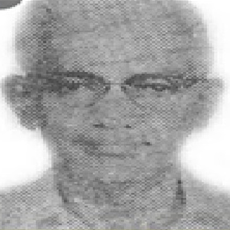
-------------------------------------
Leave a Reply
Your Comment is awaiting moderation.


